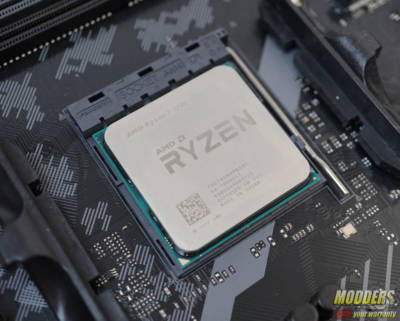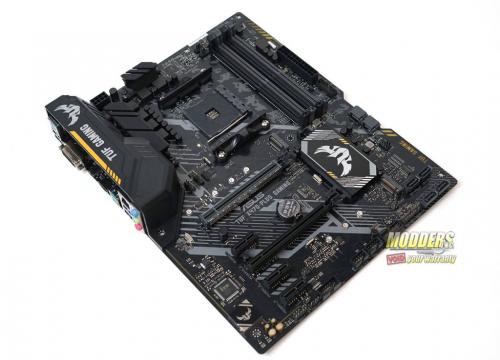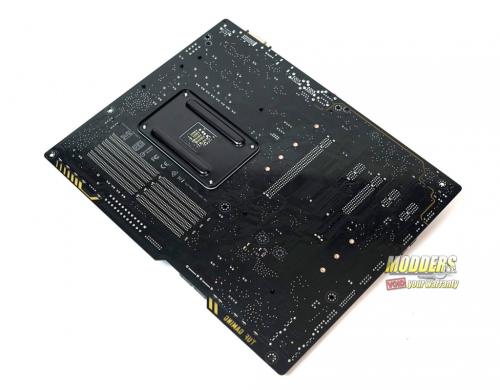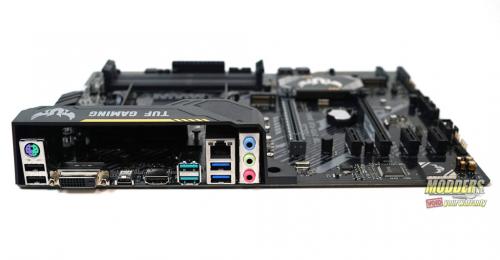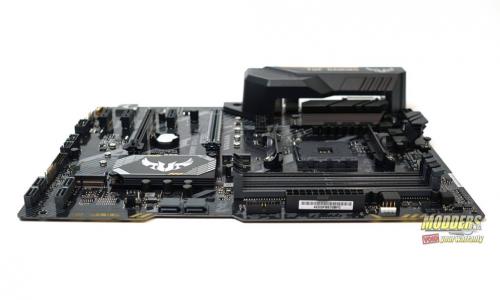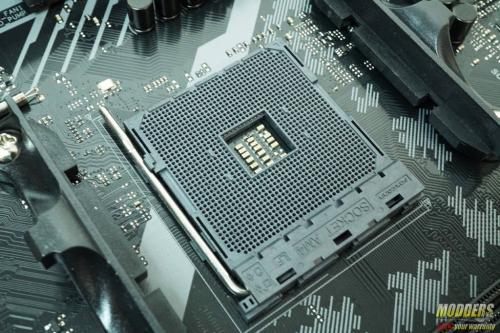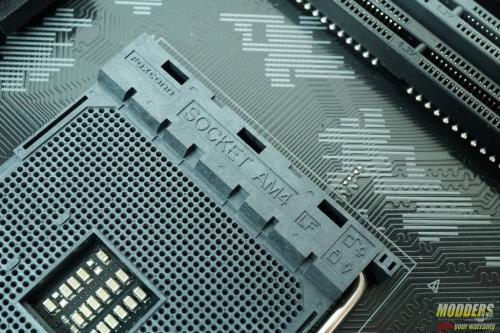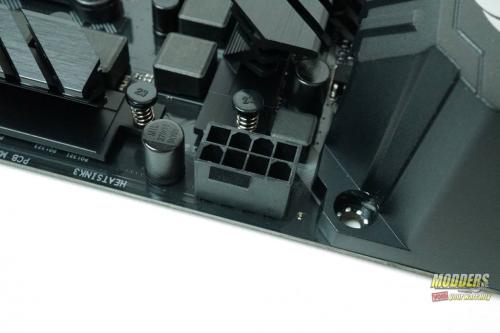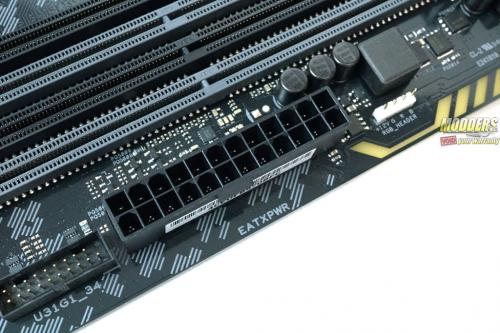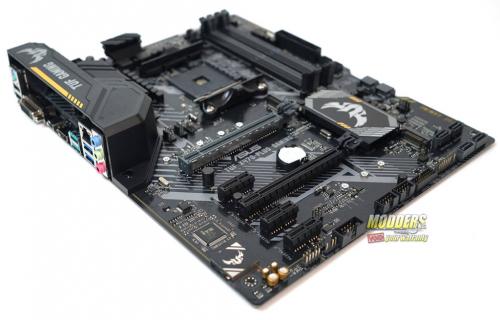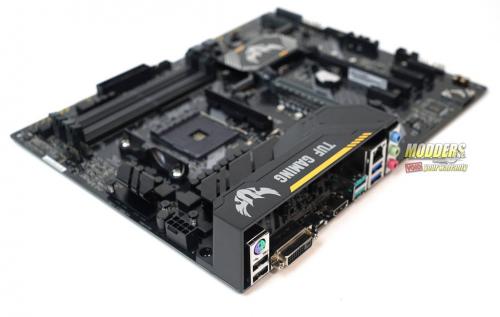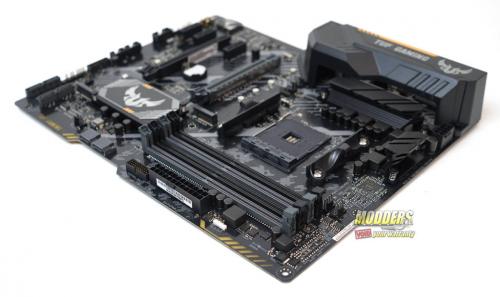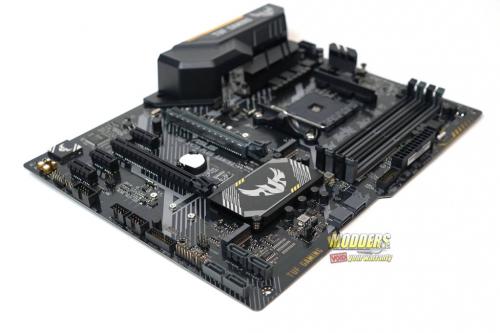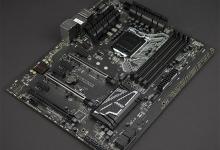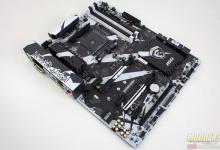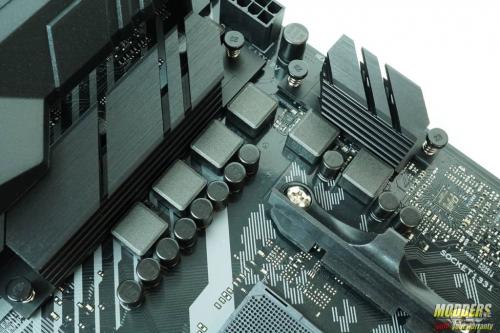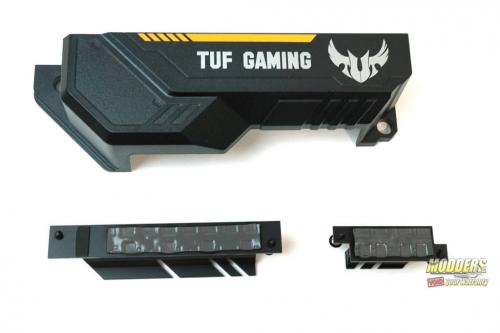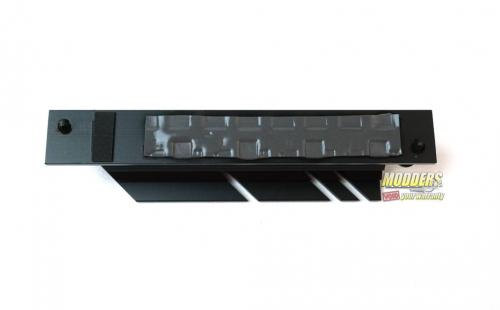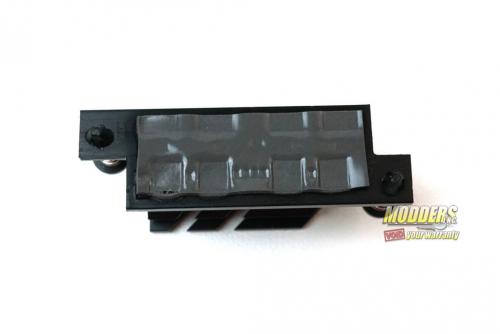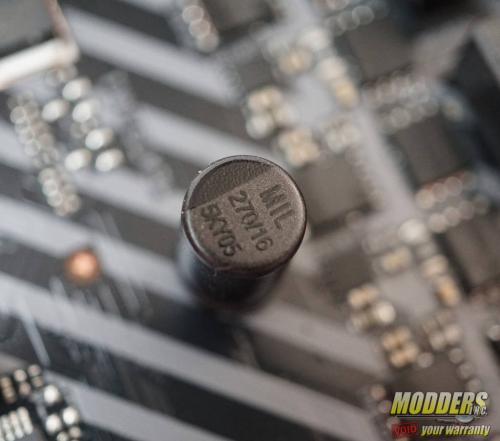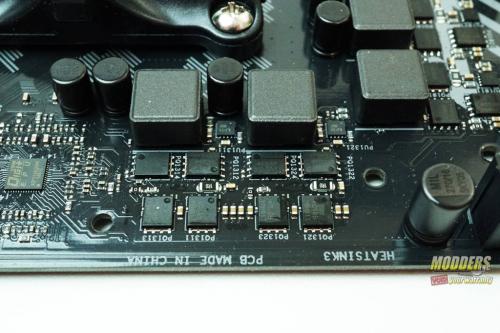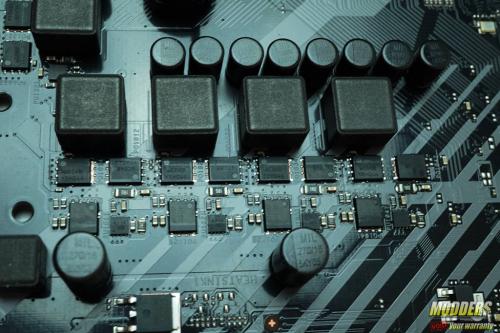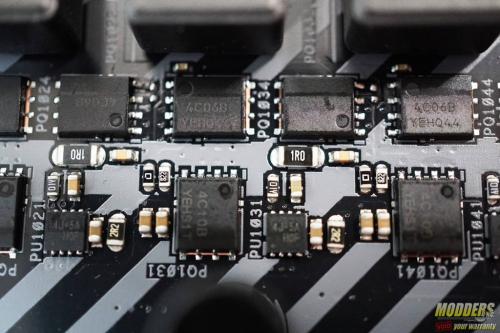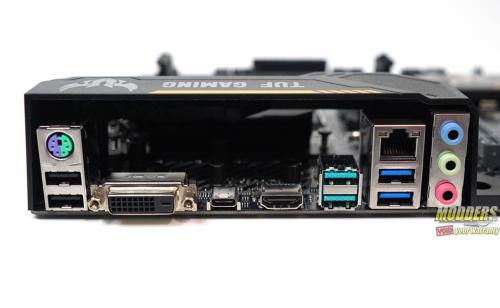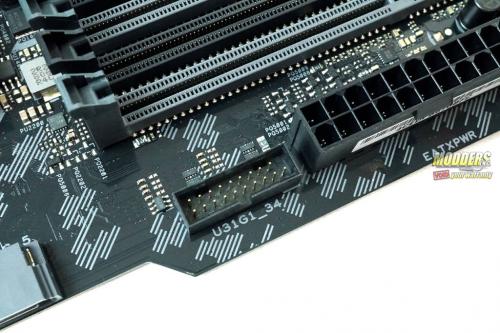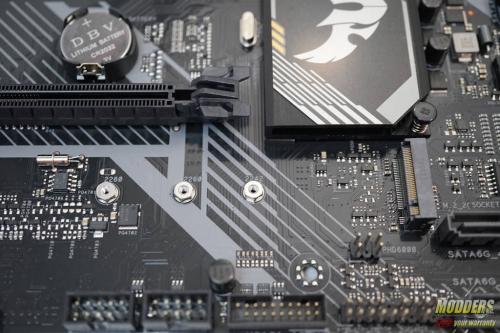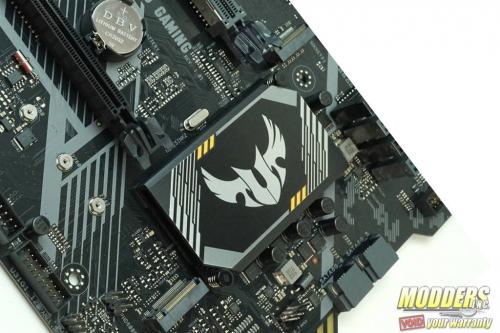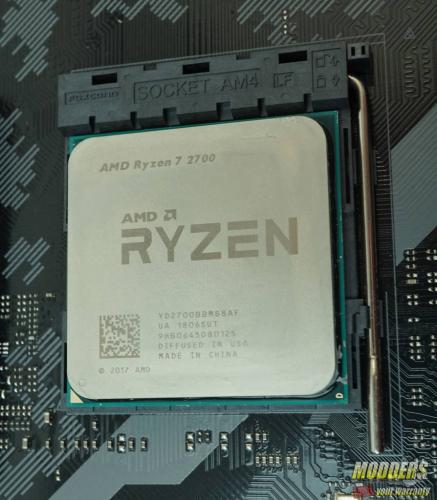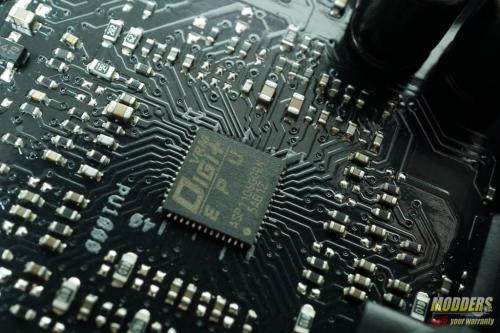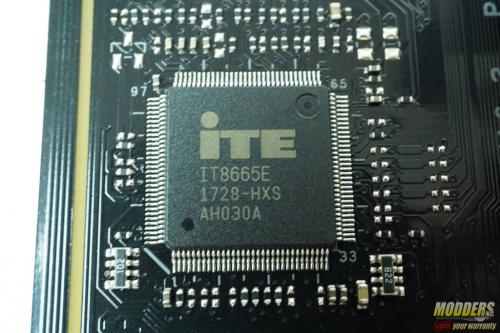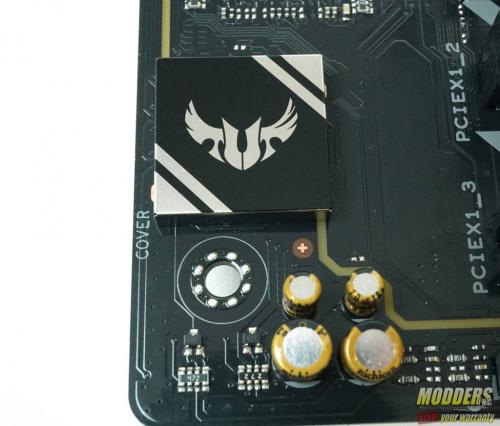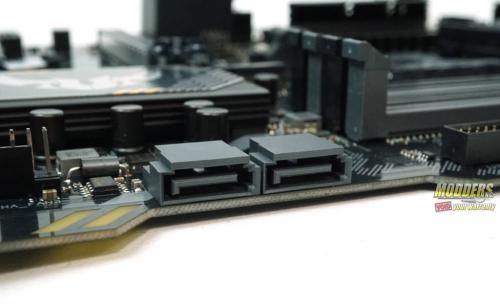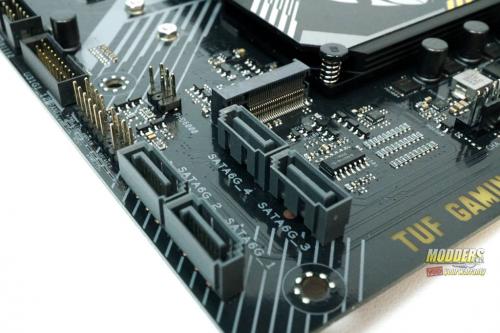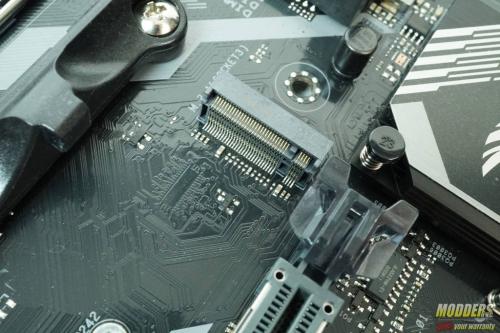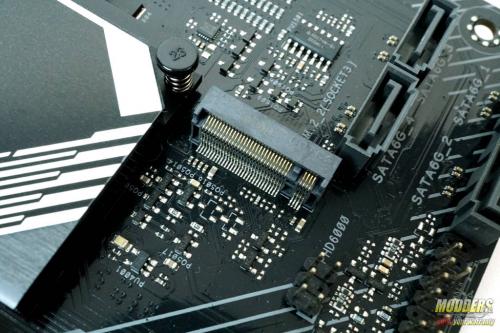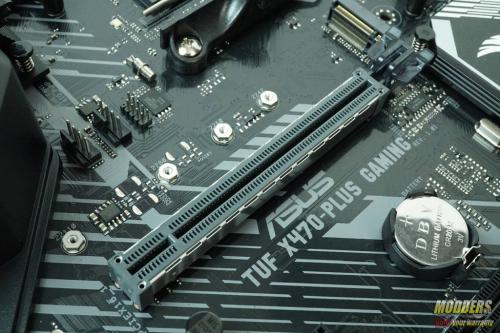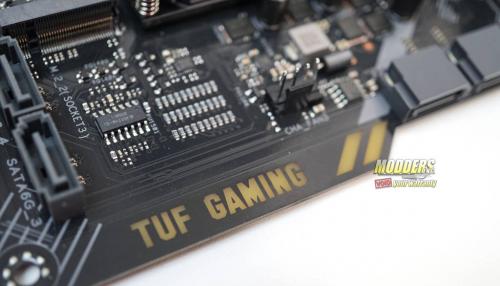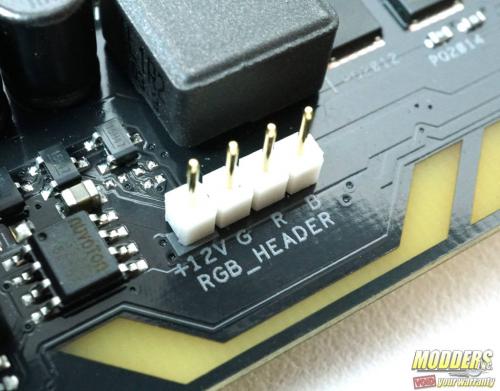A Closer Look at the TUF X470-Plus Gaming
The X470-Plus TUF Gaming is predominantly black, with some yellow accents. However, the yellow is so subtle, I’d consider this to be a neutral color board. This seems to be a theme with most motherboard manufacturers as of late, especially ASUS. Ever since they dropped the red and black theme of the ROG line, most of their motherboards could be considered neutral colored. This allows their boards to fit in any color scheme. Now, if you like the idea of the TUF components, but can’t find hardware to match the board properly, ASUS has you covered with their TUF Gaming Alliance. This is a collaborative effort between ASUS and several other companies such as Cooler Master, Corsair, G. Skill, Ballistix. In Win and Thermaltake to create a line of TUF branded hardware that includes cases, DRAM, coolers and ever power supplies. This will allow you to build a completely TUF branded system with components that are guaranteed to be compatible.
The X470 TUF is a standard size ATX motherboard. However, the right side flairs out a bit on the top and bottom. This is a feature of ASUS boards over the last couple generations. Other than that, it’s your typical ATX motherboard with two PCIe X16 slots and four DIMM slots. The board has a standard 24 pin power connector and a standard 4+4 CPU connection.
The X470 TUF may look like a budget board. It may be priced as a budget board. However, after tested our Ryzen 7 2700 on the X470 TUF Gaming, I can see it doesn’t really perform like a budget board. Some people will tell you that the motherboard Won’t affect your performance. However, I’d disagree. Some chipsets lock the ability to overclock. Although you can overclock on the X470 chipset, the same chip will perform differently on different boards. For example, when we reviewed the R7 2700 initially, it was on the Aorus Gaming 7 Wi-Fi. It was a great board. However, it costs about 100 dollars more than the TUF Gaming and 2700 performed better on the X470 TUF. This comes down to the components used on the board.
The X470 TUF uses TUF Chokes, TUF capacitors and TUF MOSFETs. All TUF components are Military grade. The TUF Chokes deliver rock steady power to the CPU and help to improve system stability. TUF Capacitors have an increased temperature tolerance of about 20% and have 5 times longer lifespan than your average capacitor. The TUF MOSFETs with lower RDS(on).
This is where it gets a bit technical. MOSFET stands for Metal Oxide Field Effect Transistor. The RDS(on) stands for drain-source on resistance and determines the max current rating of the MOSFET. Essentially, lower RDS(on) reduces heat generation and results in better power efficiency. The TUF LANGuard offers the best protection from ESD or electrostatic discharge. Up to 2.5 times the protection of other motherboards. The ESD Guards offer protection for the LAN Port, keyboard and mouse connections, VGA protection and USB connectors. ESD Guards provide protection for up to +/- 10kV of air discharge and +/- 6kV of contact discharge. This is much better than the traditional industry standards of +/- 6kV and +/- 4kKV.
The I/O of the X470 TUF is simple but has everything you need. There are three 3.5 mm jacks for the Realtek® ALC887-VD2 8-Channel High Definition Audio CODEC. A single Realtek® RTL8111H with TUF LanGuard. For USB, there are two USB 3.1 gen 2 Type A and a single Type C, two USB 3.0 and @ USB 2.0. There is also a PS/2 Port for old-school peripherals. Lastly, there is a DVI port and an HDMI port if you use one of AMD’s APUs such as the 2200G. The X470 TUF also supports up to four front USB 3.1 gen 1 ports.
The X470 TUF features the X470 chip and the same AM4 socket from the X370 chipset. The X370 and X470 chipsets are very similar, with only a few main differences. These are XFR2, or Extended Frequency Range 2, and Precision Boost 2. Also, StoreMI is only available with X470 Motherboards. StoreMI lets you pair a mechanical hard drive with an SSD or up to 2GB of RAM. StoreIM then combines the storage into a virtual disk for your most used programs to have the fastest speeds. Also, the X470 chipset allows for faster memory speeds at 2933MHz, over the 2667MHZ of the X370 chipset.
We had to mention the differences between the two chipsets. With Precision Boost 1.0, the processor is allowed to increase the speed of a couple of cores, depending on temperature and power limits. However, with Precision Boost 2.0, the second generation of Ryzen processors can boost on several cores, as long as it doesn’t hit the chips thermal limits.
The X470 TUF uses the Realtek® ALC 887 codec. This features shielded audio for superior sound. Audio shielding separates analog and digital audio signals and reduces multi-lateral interference. Each channel left and right has its own layout on the PCB. This helps to eliminate audio degradation. The “TUF Gaming audio cover” helps to ensure the quality of the audio. ASUS uses premium Japanese capacitors for the best quality audio.
The X470 TUF Gaming has two M.2 slots. The top slots lanes comes directly from the CPU and supports PCIe 3.0 x4 M.2 SSDs and SATA mode M key SSDs up to 22110 in length. The bottom M.2 gets its lanes from the PCH and supports M.2 SSDs up to 2280 in length. There are also a total of six SATA 6 ports on the X470 TUF. This board supports SATA Raids 0,1, and 10. There is also a single RGB header on this side of the motherboard. This can run either an RGB strip, RGB fans or RGB lighting on a computer case or any RGB peripheral. There is also RGB lighting down the right side of the motherboard, as well as on the chipset heatsink.
The X470 TUF is built using SafeSlots for the PCIe X16 slots on the board. These slots have a 1.6 times stronger retention force over traditional motherboards and were 1.8 times stronger in a shearing test when pulling the slot from side to side. SafeSlots integrate metal throughout the slots that make them stronger. These slots also have additional solder points to attach it to the PCB. For memory, TUF boards are tested with an extensive range of memory form all different price ranges. This allows you to use just about any kit of DDR4, regardless of speeds or manufacturer.
